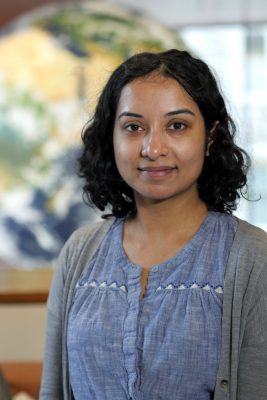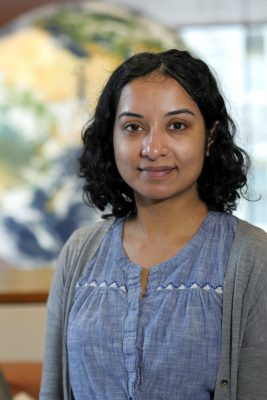What Can We Learn From Tropical Storm Hilary?
Tropical Storm Hilary dumped more than 4 inches of rain on the coastal areas of Southern California this week, and more than 10 inches in the mountains. The weather event led to flooding, downed trees and power lines and even triggered mudslides. It is the first land-fallen tropical storm to hit the area in more than 80 years.

Tripti Bhattacharya, Thonis Family Professor in Syracuse’s Department of Earth and Environmental Sciences, focuses her research on understanding the sensitivity of regional rainfall to global climate change. In 2022 published research, she led a team that used ancient climate data to predict how the summer monsoon may change in the North American southwest.
Bhattacharya says:
“This summer has seen a number of high impact weather events that highlight the impact of extremes on infrastructure.
“Tropical Storm Hilary represents an unprecedented event in the historical record. Few storms tend to propagate north over Baja into California, typically because ocean temperatures off the coast of southern California are relatively cool. These cool temperatures lower the amount of fuel available for tropical storms, causing them to dissipate rapidly if they do travel north. However, this year we are seeing record warmth over much of the global ocean, including the northeast Pacific. An El Nino event in the equatorial Pacific likely plays some role in this record warmth, but further work is needed to disentangle the potential role of climate change vs. other factors.
“Because this type of event is unprecedented in the historical record, it is hard to study a one-off event. But we know from climate models and theoretical predictions that rainfall is likely to increase in intensity in a warmer world. And we can study past warm climate states, when ocean temperatures off California were much warmer than during the pre-industrial interval, to understand how the statistics of rainfall and tropical storms might change in the future. As a paleoclimatologist, I use molecules in ancient rocks as well as climate models to understand these past warm climate states.”
To request interviews or get more information:
Daryl Lovell
Media Relations
M 315.380.0206
dalovell@syr.edu | @DarylLovell
Syracuse University



